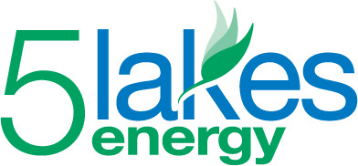When a factory is more energy efficient, owners spend less money on heat and power, boosting profits and making the manufacturer more competitive. Unfortunately, industry efforts to improve their energy efficiency face significant barriers in states with unfair rates for what’s known as stand-by power.
Many factories and other large facilities can benefit from installing clean, energy-efficient combined heat and power (CHP) or waste heat to power (WHP) systems. A CHP system allows its host to produce both heat and electricity on site from a single fuel source. A WHP system captures wasted heat to generate electricity. The result is that hosts use less power from the grid. CHP and WHP systems save manufacturers money in energy costs and make them more competitive, while also reducing the demand on the grid and making the entire energy delivery system more reliable and less prone to blackouts.
But while CHP and WHP are steady and reliable sources of energy, they may not cover all of a factory’s needs. For example, companies may still need to be connected to the standard energy grid for backup or supplemental power, or to cover periodic shut-downs for planned maintenance or repairs. When manufacturers depend on grid power, they pay what are called “standby rates” – often hefty charges, which vary widely from one utility to another.
Unfair standby rates can leave companies over a barrel should they suddenly need to buy energy. Each utility sets its own standby rates and can stack them with needless and unfair fees. These kinds of penalties essentially prevent companies from investing in CHP/WHP, blocking them from being as clean, efficient, and competitive as they could be.
In Minnesota, for example, one analysis showed that one company could pay up to six times more for energy than a similar company in another service territory under the same circumstances, just because they are served by different utilities. Because customers can’t shop around for a different utility, the usual economic checks and balances don’t apply.
That’s why Midwestern companies are now weighing in to ask state officials to fix exorbitant or unfair standby rates. Fifteen companies in Michigan and Minnesota – manufacturers, developers, and institutions like Dow Chemical, Eastman, Cargill, Minnesota Forest Industries, and Schneider Electric – have recently signed letters asking for fair and reasonable standby rates that would encourage the installation of CHP and WHP systems.
“Investment in Combined Heat and Power systems makes our businesses more competitive, securing jobs, while improving energy efficiency and conserving valuable resources,” said Charles Melcher, senior vice president, Central United States, for Veolia North America. “As a business, we need fair and predictable rates including standby charges that recognize the many benefits of CHP and promote local investments.”
CHP and WHP system hosts expect to pay standby charges to ensure access to back-up power in the rare instances when it is needed. However, these charges are a major burden to manufacturers when they do not reflect these self-generation customers’ infrequent use of utility capacity and infrastructure.
“Michigan’s chemistry companies have invested in clean, efficient energy systems to power our manufacturing sites in the state,” said John Dulmes, executive director of the Michigan Chemistry Council. “Unfortunately, the current standby charges do not take into account the diversity of customer load and the actual costs imposed by ‘partial use’ customers who generate their own power 95 percent of the time.”
Studies by 5 Lakes Energy found that standby fees can range by thousands of dollars simply based on a project’s location and utility. For example, a Michigan company with a 2 MW CHP system with no outages would be required to pay standby fees ranging from roughly $8,300 to more than $10,500 each month – dependent upon where the system is located. In Minnesota, a company with a 2 MW CHP system with no outages would be required to pay standby fees ranging from roughly $1,000 to nearly $6,600 each month – dependent upon where the system is located.
If utility charges for access to this standby power are too high, they can deter a company from installing CHP or WHP systems – and that’s a problem for everyone.
“Our analysis demonstrates that there are still concrete improvements needed in Minnesota utilities’ approach to standby rates,” said Jamie Scripps, partner, 5 Lakes Energy. “Without further revision, the proposed standby tariffs pose a significant barrier to Combined Heat and Power development – and a significant burden to current CHP customers.”
Manufacturers and trade associations are beginning to weigh in with state regulators – and it’s making a difference. Utility commissions need to hear that standby rates affect the bottom line – and will influence decisions about whether to invest in a state. And utilities are starting to take notice. In Minnesota, the PUC has required its four rate-regulated utilities to review their standby rates and file updated tariffs. As these charges are refined, we can reduce a barrier to CHP and WHP, and help unlock the many benefits of these technologies.
Learn more about the potential for industrial efficiency to save money and create jobs from the Alliance for Industrial Efficency.
